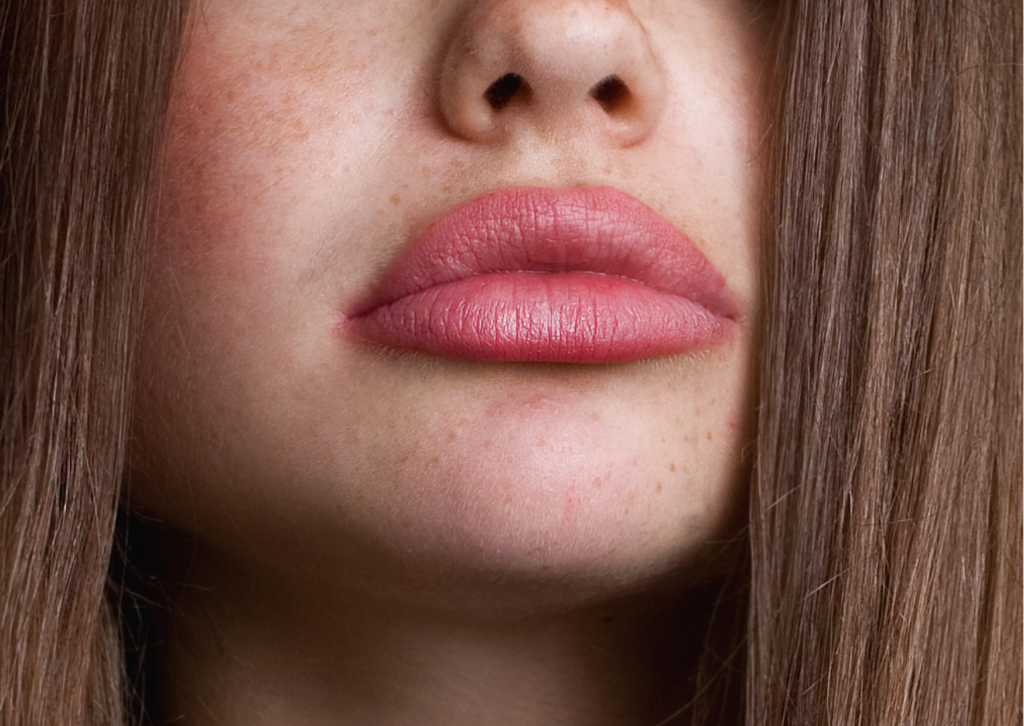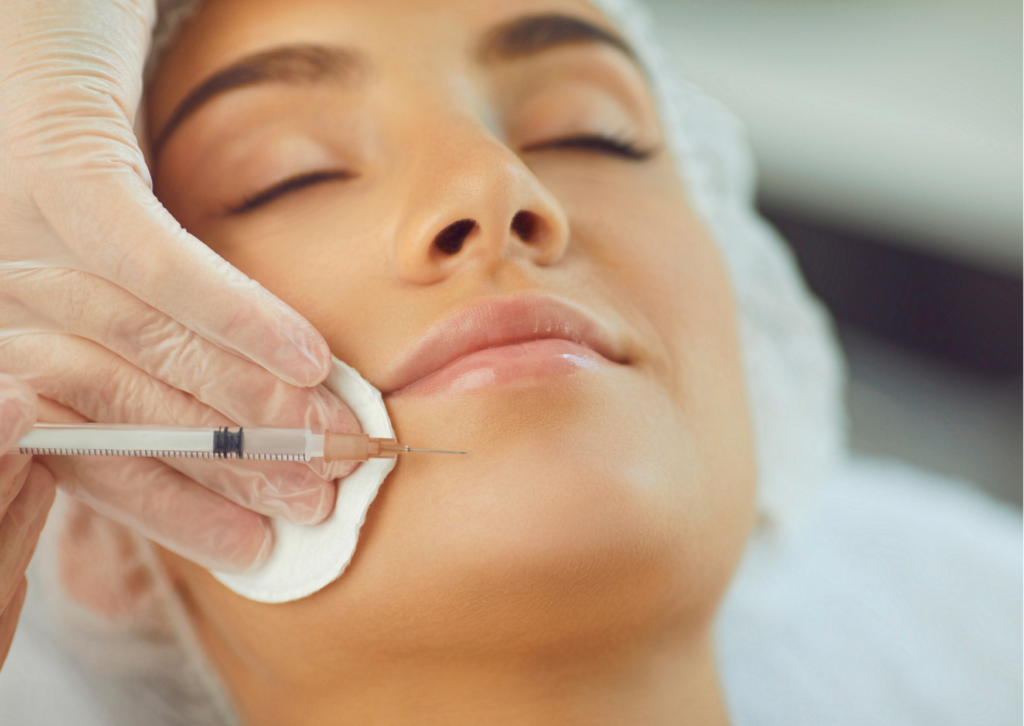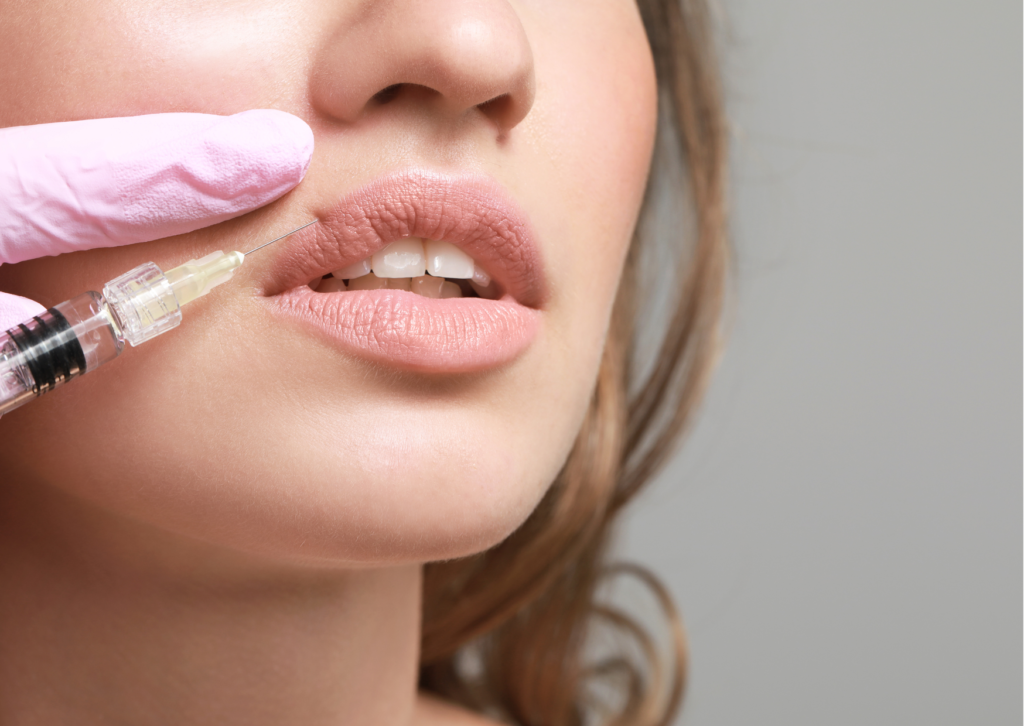Cosmetic lip fillers have become increasingly popular in recent years, but what happens when they go too far? How can you deal with excessive filler and correct the issue? In this blog, we’ll discuss your options when filler goes too far and how a reputable cosmetic practitioner can help.
What Can I Do if My Filler Goes Wrong?

If you find yourself unhappy with the results of your dermal filler treatment, it’s important to remember that options are available to address the situation. The first step is to consult with a qualified and experienced medical professional who specialises in cosmetic injectables. They will assess your specific concerns and determine the best course of action. In some cases, they may recommend a hyaluronidase injection, which can dissolve the hyaluronic acid filler and help restore a more natural appearance. In more severe cases, surgical intervention may be necessary. Communicating openly with your healthcare provider, expressing your concerns, and working together to develop a customised plan to correct the issue and achieve the desired outcome is crucial. Remember, solutions are available, and seeking professional advice is key to resolving fillers.
What Are The Symptoms of Fillers Gone Too Far?

When dermal fillers are administered incorrectly or in excessive amounts, it can lead to an unnatural appearance and undesirable results. Some common symptoms of fillers gone too far include:
- An overfilled or “puffy” appearance.
- Asymmetry or unevenness.
- Lumps or bumps in the treated area.
- A distorted facial contour.
- Restricted facial movements.
These symptoms can cause significant distress and impact one’s self-esteem. It’s essential to be aware of these signs and seek professional advice if you experience any of these symptoms after a filler treatment. A qualified medical professional can assess your situation, provide an accurate diagnosis, and discuss appropriate options for correction or revision to help restore a more balanced and natural-looking result. Remember, early detection and prompt action are crucial in addressing and resolving any issues related to fillers gone too far.
What is ‘normal’ when it comes to dermal fillers?

Regarding dermal fillers, the concept of “normal” can vary significantly as each individual’s aesthetic preferences and desired outcomes are unique. However, a “normal” outcome of dermal filler treatment generally enhances and rejuvenates the appearance while maintaining natural-looking results. This typically involves achieving a more youthful and refreshed appearance by addressing specific concerns such as volume loss, wrinkles, or asymmetry. A skilled and experienced injector will aim to create a harmonious balance, ensuring that the results align with the patient’s facial features and proportions. Having realistic expectations and communicating your goals with your provider is important to ensure a satisfactory outcome. Ultimately, dermal fillers aim to enhance your natural beauty and restore a more youthful appearance while still allowing you to look like yourself.
What are some warning signs that your filler might be infected, and what to do?

While infections from dermal fillers are relatively rare, it’s important to be aware of the warning signs and know what to do if you suspect an infection. Some common symptoms of a possible infection include increased redness, swelling, pain, or tenderness at the injection site, warmth or heat in the area, and the presence of pus or discharge. If you experience any of these symptoms, seeking immediate medical attention from your healthcare provider or the professional who administered the filler is crucial. They can assess the situation, provide a proper diagnosis, and recommend the appropriate course of action, including antibiotic treatment or drainage of any abscess if necessary. Prompt attention to a potential infection can help prevent complications and ensure proper management of the situation.
What are the signs of an occlusion, and what should you do if you experience it?

Occlusion after filler refers to a condition where the blood flow to a specific area is blocked or restricted due to the injected filler material. It can occur when the filler is inadvertently injected into a blood vessel, leading to compression or obstruction of the vessel. This can result in compromised blood circulation to the surrounding tissues, potentially causing ischemia (lack of oxygen) and tissue damage. Symptoms of occlusion after filler may include blanching or paleness of the skin, pain or discomfort, coolness or numbness in the affected area, and even skin necrosis (tissue death) in severe cases. Immediate medical attention is crucial if occlusion is suspected, as prompt intervention can help minimise potential complications and restore blood flow to the affected area.
What is filler migration, and how can it be fixed?

Filler migration refers to the movement or displacement of dermal filler from its initial injection site to another area of the face. It can occur due to various factors such as gravity, muscle movement, or incorrect injection technique. When fillers migrate, they may create an uneven or unnatural appearance, leading to dissatisfaction with the results. To address concerns of filler migration, different approaches can be taken depending on the specific situation. One option is to wait for the filler to naturally dissolve over time, although this can take several months. Alternatively, a skilled medical professional can perform corrective treatments, such as injecting additional filler to balance out the migrated areas or using techniques like hyaluronidase to dissolve the filler and start anew. It’s essential to consult with a qualified practitioner who can assess the situation and recommend the most appropriate course of action to address filler migration effectively.
In conclusion, while dermal fillers can provide beautiful and natural-looking results, there are instances when things may go differently than planned. It’s important to know the potential risks and complications associated with fillers and understand the available options when things go wrong. Whether it’s addressing filler migration, infection, or other undesirable outcomes, seeking the assistance of a qualified and experienced medical professional is crucial. They can assess the situation, provide guidance, and offer appropriate treatments to rectify the issue. Communication and collaboration with your practitioner are vital to ensuring your satisfaction and safety throughout the filler journey. By being informed, proactive, and seeking professional help, you can confidently navigate the challenges and achieve the desired results.
Book an appointment with KPA today, and let’s create a roadmap to achieve your aesthetic goal.




